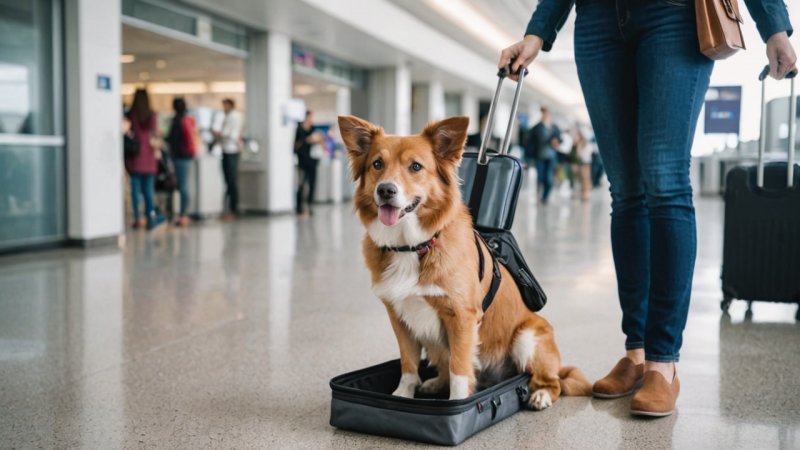Traveling by air with your beloved pet can be a daunting task, but with the right preparation, it can be a smooth experience for both you and your furry friend. To gain deeper insights on this topic, we sat down with Dr. Alex Mitchell, a fictional veterinary expert with over 15 years of experience in animal care and travel. Dr. Mitchell has worked with numerous pet owners to help ensure their pets are ready for the skies. In this engaging interview, we explore essential tips and advice for preparing pets for air travel.
Understanding Your Pet's Needs
Interviewer: Dr. Mitchell, what are the first steps a pet owner should take when preparing their pet for air travel?
Dr. Mitchell: The first step is to understand your pet’s needs and temperament. Each animal is unique, so it’s crucial to assess how your pet reacts to new environments. If your pet is generally anxious or has never traveled before, consider taking shorter trips to get them accustomed to being in a carrier or in new places.
Choosing the Right Carrier
Interviewer: What should pet owners look for when selecting a travel carrier?
Dr. Mitchell: The carrier is one of the most critical components of air travel. It should be well-ventilated, sturdy, and comfortable for your pet. Make sure it complies with the airline’s regulations, as each airline may have different requirements. A good rule of thumb is to choose a carrier that allows your pet to stand, turn around, and lie down comfortably. Additionally, familiarize your pet with the carrier before the trip by allowing them to explore it at home.
Health Preparations
Interviewer: Are there any health checks that pets should undergo before traveling?
Dr. Mitchell: Absolutely. A pre-travel vet check-up is essential. Your veterinarian can assess your pet’s health and determine if any vaccinations or medications are necessary. If your pet is prone to anxiety, your vet can prescribe calming medications or recommend natural remedies to help ease travel stress. Also, ensure your pet is microchipped or has a collar with an ID tag that includes your contact information.
Feeding and Hydration
Interviewer: What advice do you have regarding feeding pets before a flight?
Dr. Mitchell: I recommend feeding your pet a light meal a few hours before the flight. Avoid feeding them right before traveling to reduce the risk of nausea. It’s also essential to keep your pet hydrated, but be cautious with water intake just before the flight. Consider using a spill-proof water bowl during the journey to ensure they stay hydrated without making a mess.
Preparing for Security Checks
Interviewer: How can pet owners make the security process easier at the airport?
Dr. Mitchell: Plan ahead for airport security. Most airports require pets to be removed from their carriers while the carrier itself is screened. To make this process smoother, practice this at home. When you arrive at the airport, ensure your pet is on a leash and comfortable in the new surroundings. Keeping your pet calm can significantly reduce stress during this process.
In-Flight Comfort
Interviewer: What are some ways to keep pets comfortable during the flight?
Dr. Mitchell: Comfort is key! Bring along a familiar blanket or toy that smells like home; it can provide a sense of security for your pet. Additionally, if your pet is in the cabin with you, talk to them soothingly and offer treats periodically to create positive associations with flying. For pets traveling in cargo, make sure they are well acclimated to their carrier and that it is properly labeled with your information.
Post-Flight Care
Interviewer: What should pet owners do once they land?
Dr. Mitchell: Once you have arrived at your destination, take some time to let your pet acclimatize to their new environment. Offer them food and water and provide a quiet space for them to relax. Monitor them closely for any signs of stress or discomfort, and don’t hesitate to consult a veterinarian if you notice anything unusual.
Final Thoughts
Interviewer: Any final advice for pet owners considering air travel?
Dr. Mitchell: Always prioritize your pet's comfort and health. Preparation is key to ensuring a positive travel experience. Remember that every pet is different; what works for one may not work for another. Just take things step by step, and your pet will likely adapt well to air travel.






